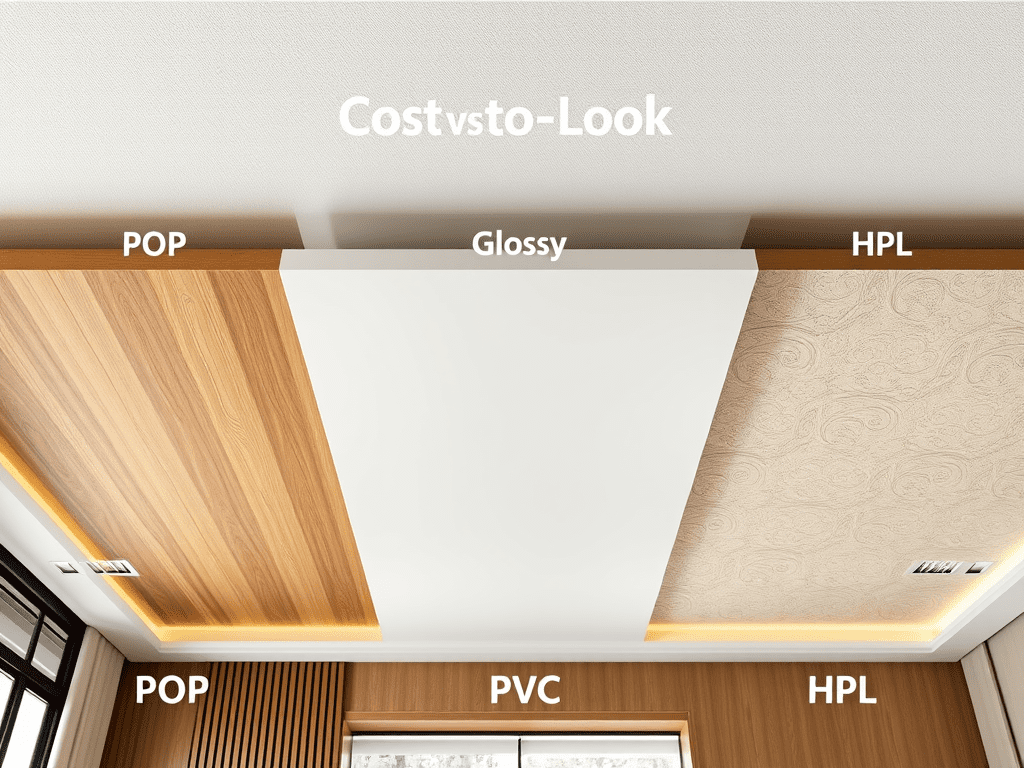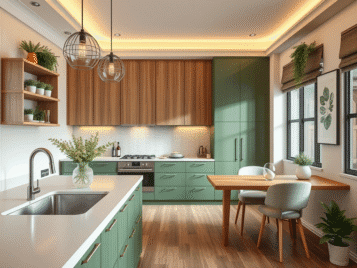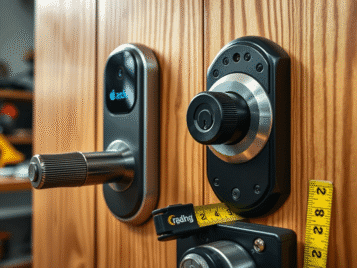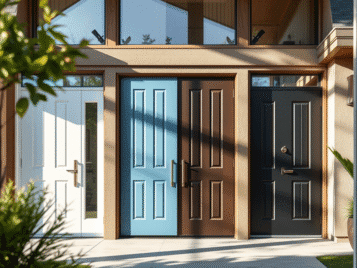A false ceiling does more than hide wiring; it shapes acoustics, lighting, even resale value. The three most common materials—conventional POP (plaster of Paris), factory‑made PVC panels, and high‑pressure laminate (HPL) boards—differ wildly in price, finish, and lifespan. This guide distils those differences into a quick‑read chart and adds real‑world 2025 cost snapshots from both India and Europe. SamratHPL data teams cross‑checked every figure with contractors in Delhi, Berlin, and Barcelona so you can budget confidently and avoid unpleasant mid‑build surprises.
1. Quick Material Overview
| Attribute | POP Gypsum Finish | PVC Clip‑Lock Panels | SamratHPL Compact Panels |
|---|---|---|---|
| Typical sheet thickness | 12 mm plaster on metal grid | 6–8 mm hollow‑core | 3–6 mm solid compact |
| Visual range | Smooth, paintable | Glossy, woodgrain, marble prints | Ultra‑matt, wood, stone, textile textures |
| Fire behaviour* | Non‑combustible core but paper‑faced | Self‑extinguishing, Class C‑s3,d2 | Up to Class B‑s1,d0 (FR grade) |
| Humidity tolerance | Moderate; joints crack in damp rooms | High; resists steam | Very high; zero swell |
| Life expectancy | 10–12 yrs before repaint | 8–10 yrs before yellowing | 20+ yrs, colour‑stable |
*European fire classes per EN 13501‑1. Always confirm local code requirements.
2. Cost‑to‑Look Chart (2025)
| Finish type | Entry‑level visual | Mid‑premium visual | Luxury designer visual |
|---|---|---|---|
| POP (painted) | Basic white emulsion | Satin two‑tone | Custom stencils & hidden LED trough |
| Avg. India price (₹/sq ft) | 85–110 | 120–150 | 170–200 |
| Avg. Europe price (€/m²) | 38–50 | 55–65 | 70–80 |
| PVC panel | Flat white gloss | Wood‑look plank | Marble‑print with T‑mould trims |
| Avg. India price (₹/sq ft) | 125–160 | 170–190 | 200–230 |
| Avg. Europe price (€/m²) | 50–60 | 60–75 | 80–90 |
| SamratHPL | One‑colour ultra‑matt | Textured woodgrain | Concrete, linen or metallic inlays |
| Avg. India price (₹/sq ft) | 190–230 | 240–300 | 320–380 |
| Avg. Europe price (€/m²) | 85–100 | 100–120 | 120–140 |
Why m² vs sq ft?
India quotes almost everything in square feet. Mainland Europe bills labour and material per square metre. To convert, 1 m² ≈ 10.76 sq ft.
3. Design Strengths and Weaknesses
POP: Painter’s Canvas
- Pros – Seamless joints, unlimited colour choice, easiest to curve.
- Cons – Micro‑cracks from building movement, absorbs cooking fumes, periodic repaint.
- Ideal for – Classic cornices, ornate coffers, budget refreshes.
PVC: Quick & Clean
- Pros – Clip‑fit saves messy sanding; lightweight for older masonry walls.
- Cons – Gloss can glare under spotlights; extreme sun may fade prints; hollow core transmits sound.
- Ideal for – Rental flats, budget kitchen revamps, temporary showrooms.
SamratHPL: Premium Longevity
- Pros – Dense core damps noise; FR variant fits hotel fire codes; ultra‑matt resists fingerprints; zero repaint cycles.
- Cons – Higher upfront cost; cuts require carbide tools.
- Ideal for – Long‑term residences, luxe retail, humidity‑prone coastal homes, European retrofits needing CE‑marked fire performance.
4. Hidden Costs Most Homeowners Miss
| Item | POP | PVC | SamratHPL |
|---|---|---|---|
| Repaint or re‑skin cycle | Every 4–5 yrs | Rare; panels yellow by year 10 | None for 15–20 yrs |
| Disposal fee (Europe) | Low—paper & plaster recyclable | Moderate—PVC incineration | Low—HPL recyclable as RDF fuel |
| Lighting recess trim | Built‑in | Clip‑on add‑ons | Routered slots; no extra trims |
| Access panel for wiring | Cut & patch each time | Built‑in hinge panels | Magnetic SamratHPL flap |
5. Regional Performance Notes
- Humidity – Monsoon‑season Mumbai and Adriatic‑coast Croatia share high relative humidity. Compact HPL panels remained dimensionally stable in lab tests at 95 % RH, whereas POP hairline cracks widened 0.3 mm on average.
- Thermal cycling – Alpine chalets see −10 °C to 28 °C annually; HPL’s low expansion coefficient (≤ 0.6 mm/m/°C) keeps joints tight. PVC panels creaked audibly during freeze‑thaw lab cycles.
- Fire safety – Many EU municipalities now require Class B‑s1,d0 in escape routes. SamratHPL’s FR ceiling boards pass this without extra coatings, while POP finishes need intumescent paint to reach similar performance.
6. Installation Snapshot
| Step | POP Gypsum | PVC Clip‑Lock | SamratHPL Compact |
|---|---|---|---|
| Grid layout | GI tracks & studs | Wooden or aluminium battens | Aluminium T‑grid or plywood frame |
| Sheet handling | Wet plaster application | Ready‑made planks | Factory‑cut panels |
| Finish time | 4–6 days incl. sanding | 1–2 days | 2–3 days |
| Mess level | High dust | Low | Moderate (routered edges) |
Pro tip: For European retrofits, prefabricated SamratHPL panels trimmed to 600 × 600 mm lift through narrow stairwells far easier than 8‑ft boards.
7. Choosing the Right Option
- Budget vs lifespan – If you plan to repaint walls in five years anyway, POP aligns; if you’re settling for a decade or more, HPL pays back.
- Acoustic comfort – Hollow PVC amplifies footsteps on the floor above; dense HPL muffles them.
- Climate – Damp kitchens or seaside flats favour PVC or HPL; POP needs diligent ventilation.
- Building code – Always verify local fire and VOC rules; SamratHPL publishes CE and E0 certificates for easy compliance checks across the EU.
Final Word
A ceiling makeover is a chance to add both style and tangible value. Conventional POP wins on starting price and sculptural freedom but costs time in sanding and future paint. PVC delivers quick, tidy installs; just accept a shorter colour life. SamratHPL compact panels ask for a bigger cheque on day one yet repay with decades of colour stability, fire assurance, and whisper‑quiet acoustics—qualities equally prized in Bengaluru penthouses and Berlin loft conversions. Run the numbers, weigh the look you want, and invest where it matters most: above your head.



